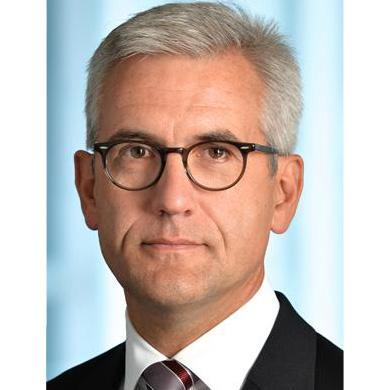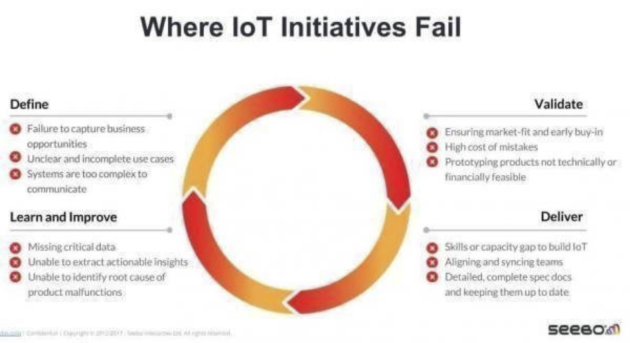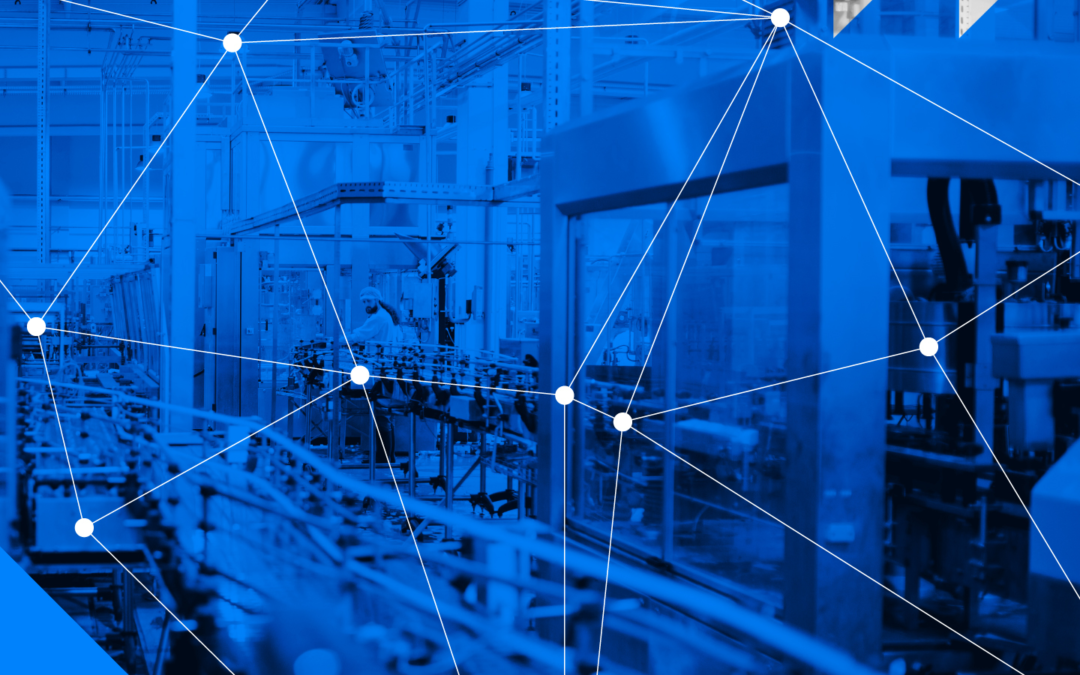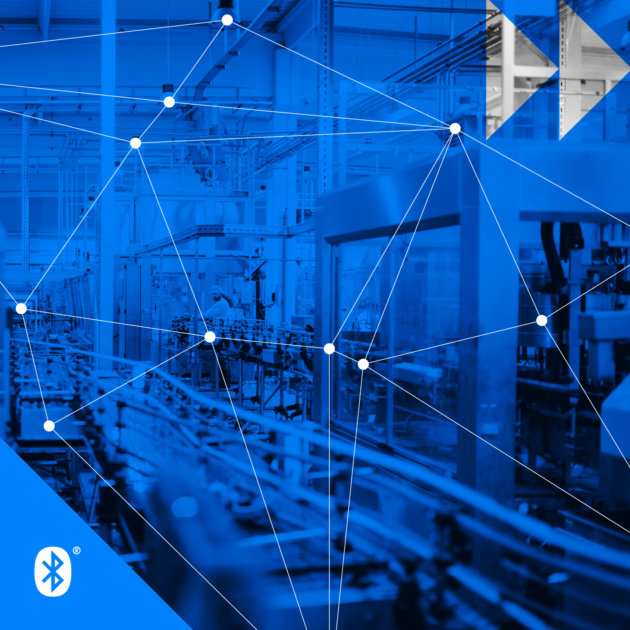
by Gary Mintchell | Sep 28, 2018 | Automation, Commentary, News, Software
Dreamforce, the Salesforce annual customer conference, was this week in San Francisco. I should have been there. Along with 100,000 of my closest IT friends. But, my project hit a crisis and I didn’t travel. All is not lost, however, since I received this information about ABB and Salesforce partnering.
The first item of interest is that I went to Salesforce’s “small” summer conference in Chicago with 3x-5x the attendees of a typical industrial technology conference. Then there is the big one with 30x or more the size. It blows the mind.
Then I consider the strategic moves that the largest industrial players are making. Siemens nailed a couple of acquisitions to bolster its MindSphere IoT platform. Schneider takes a majority stake in AVEVA to integrate design to process. ABB aligns with Salesforce (see below). And Rockwell Automation spends major dollars for a small stake in PTC evidently for a tighter integration with ThingWorx and Kepware.
Although there was a lot of marketing buzz to sort through, what ABB gets with a partnership with Salesforce is substantial. The company under the leadership of Ulrich Spiesshofer for the past five years has staged a remarkable turnaround. Don’t forget it also bolstered its machine control / discrete manufacturing portfolio with the acquisition of B+R Automation.
You can see more by watching this Fireside Chat with ABB CEO Ulrich Spiesshofer and Salesforce chairman and co-CEO Marc Benioff on the future of work and Fourth Industrial Revolution.
The stated objective of the partnership is for Salesforce to provide a single view of customers across ABB’s global sales, service and marketing operations.
The partnership will combine the power of Salesforce IoT, Einstein artificial intelligence, and ABB Ability, the cross-industry digital offering supporting an installed base of 70 million connected devices worldwide, to drive enhanced service and faster solutions for customers
Explaining Industry 4.0, otherwise known as The Fourth Industrial Revolution, Salesforce states it is a wave of innovation and technology that is radically transforming every business and industry. It’s no longer enough for manufacturers to differentiate on product—they must also predict customer needs and deliver smarter, more personalized customer experiences. With Salesforce, ABB is unifying its CRM globally, across every region, brand and department, to embrace the opportunities created by the Fourth Industrial Revolution and help its customers pursue important, new openings for service, innovation and growth.
“The Fourth Industrial Revolution is creating massive opportunities for our customers, making the work we do with them to drive innovation and create value more important than ever,” said Ulrich Spiesshofer, CEO of ABB. “That’s why we’re growing our relationship with Salesforce. The wealth of information we’ll get by unifying our data on Salesforce and combining it with our ABB Ability digital offering will allow us to use artificial intelligence and IoT more effectively, so we can anticipate our customer’s needs and write the future together.”
“ABB is undergoing incredible digital transformation and connecting with their customers in revolutionary ways,” said Marc Benioff, Chairman and co-CEO of Salesforce. “Our relationship with ABB is another example of the extraordinary power of artificial intelligence and IoT technologies to drive customer success.”
ABB’s expansion of Salesforce includes Einstein, Salesforce IoT, Sales Cloud, Service Cloud, Marketing Cloud, Community Cloud and Success Cloud advisory services.
Einstein will enable ABB to drive smarter sales and service with artificial intelligence. For example, ABB will use Sales Cloud Einstein for intelligence-driven decision making, automated data entry, identification of potential opportunities and predictive forecasting. Einstein Vision, used with Service Cloud Field Service Lightning, will be used to give ABB’s 15,000 field service technicians the ability to take a photo of an ABB product or component when they arrive onsite to automatically surface information about the product on their screens, resulting in faster, more accurate service.
Salesforce IoT will allow ABB to make data from its connected devices actionable and measurable. The company’s vision is to combine Salesforce IoT with ABB Ability so that its installed base of 70 million connected devices can use predictive intelligence, powered by Einstein, to generate and trigger actions directly into Salesforce. With Salesforce IoT and ABB Ability together, ABB will be able to improve customer experiences by getting ahead of performance and maintenance needs.

by Gary Mintchell | Sep 26, 2018 | Internet of Things, Leadership
Browsing LinkedIn, something I seldom do, I saw this image from a company called Seebo. “Where IoT Projects Fail.” Interesting, but can’t these be summed up in a word or two?

Try “management” or “leadership”.
The recurring theme I’ve found in my consulting and qualification process for a client concerns not really understanding what Internet of Things (IoT) means. Nor do they always understand realistically what benefits could accrue. Or what technologies fit.
A client one time hired me to justify a decision already made—in their minds at least—about acquisitions that would enter them into the IoT market. Another looked for use cases and settled on one not understanding the complexity of that use case.
On the other hand, a wise CTO once explained to me about themes for the company’s annual conference. One year might be IoT and another digitalization. He said they looked at the current themes in the market and then figured how their products fit, and presto—a theme.
If you are in an IoT project or contemplating one as a user or looking at a product and service plan as a supplier, step back and try using good basic management first. Organizing, defining, staffing.
Here is the list from the image:
- Failure to capture business opportunities
- Unclear and incomplete use cases
- Systems are too complex to communicate
- Missing critical data
- Unable to extract actionable insights
- Unable to identify root cause of product malfunctions
- Ensuring market-fit and early buy-in
- High cost of mistakes
- Prototyping products not technically or financially feasible
- Skills or capacity gap
- Aligning and syncing teams
- Detailed and complete spec docs and keeping them up-to-date

by Gary Mintchell | Aug 30, 2018 | Technology
Peter Diamandis, entrepreneur and founder of Singularity University and XPRIZE among many other things, interviewed his friend Ray Kurzweil at the Googleplex for a 90-minute (live) webinar on disruptive and dangerous ideas.

Diamandis promotes what he calls Abundance Thinking. He says, “By consuming and considering a steady diet of ‘crazy ideas,’ you train yourself to think bigger and bolder… a critical requirement for making impact. As humans, we are linear and scarcity-minded. As entrepreneurs, we must think exponentially and abundantly. At the end of the day, the formula for a true breakthrough is equal to ‘having a crazy idea’ you believe in, plus the passion to pursue that idea against all naysayers and obstacles.”
Kurzweil is Co-founder and Chancellor of Singularity University. He is also an XPRIZE Trustee, the Director of Engineering at Google, and “one of the best predictors of our exponential future.”
Diamandis and Kurzweil recorded a 90-minute conversation recorded on the YouTube video linked above. Here are 3 compelling ideas that came from the conversation as reported by Diamandis and sent in his newsletter. If you haven’t run across him, I recommend subscribing and having your mind blown.
The Nation-State Will Soon Be Irrelevant
Historically, we humans don’t like change. We like waking up in the morning and knowing that that the world is the same as the night before.
That’s one reason why government institutions exist: to stabilize society.
But how will this change in 20 or 30 years? What role will stabilizing institutions play in a world of continuous, accelerating change?
“Institutions stick around, but they change their role in our lives,” Ray explained. “They already have. The nation-state is not as profound as it was. Religion used to direct every aspect of your life, minute to minute. It’s still important in some ways, but it’s much less important, much less pervasive. [It] plays a much smaller role in most people’s lives than it did, and the same is true for governments.”
Ray continues: “We are fantastically interconnected already. Nation-states are not islands anymore. So we’re already much more of a global community. The generation growing up today really feels like world citizens much more than ever before, because they’re talking to people all over the world and it’s not a novelty.”
(Diamandis) previously shared (his) belief that national borders have become extremely porous, with ideas, people, capital and technology rapidly flowing between nations. In decades past, your cultural identity was tied to your birthplace. In the decades ahead, your identify is more a function of many other external factors. If you love space, you’ll be connected with fellow space-cadets around the globe more than you’ll be tied to someone born next door.
We’ll hit longevity escape velocity before we realize we’ve hit it
Ray and I share a passion for extending the healthy human lifespan.
I frequently discuss Ray’s concept of “longevity escape velocity” — the point at which, for every year that you’re alive, science is able to extend your life for more than a year.
Scientists are continually extending the human lifespan, helping us cure heart disease, cancer, and eventually neurodegenerative disease. This will keep accelerating as technology improves.
During my discussion with Ray, I asked him when he expects we’ll reach “escape velocity…”
His answer? “I predict it’s likely just another 10 to 12 years before the general public will hit longevity escape velocity.”
“At that point, biotechnology is going to have taken over medicine,” Ray added. “The next decade is going to be a profound revolution.”
From there, Ray predicts that nanorobots will “basically finish the job of the immune system,” with the ability to seek and destroy cancerous cells and repair damaged organs.
As we head into this sci-fi-like future, your most important job for the next 15 years is to stay alive. “Wear your seatbelt until we get the self-driving cars going,” Ray jokes.
The implications to society will be profound. While the scarcity-minded in government will react saying, “Social Security will be destroyed,” the more abundance-minded will realize that extending a person’s productive earning lifespace from 65 to 75 or 85 years old would be a massive boom to the GDP.
Technology will help us define and actualize human freedoms
The third dangerous idea from my conversation with Ray is about how technology will enhance our humanity, not detract from it.
You may have heard critics complain that technology is making us less human, and increasingly disconnected.
Ray and I share a slightly different viewpoint: that technology enables us to tap into the very essence of what it means to be human.
“I don’t think humans even have to be biological,” explained Ray. “I think humans are the species that changes who we are.”
Ray argues that this began when humans developed the earliest technologies — fire and stone tools. These tools gave people new capabilities, and became extensions of our physical bodies.
At its base level, technology is the means by which we change our environment, and change ourselves. This will continue, even as the technologies themselves evolve.
“People say, ‘Well, do I really want to become part machine?’ You’re not even going to notice it,” says Ray, “because it’s going to be a sensible thing to do at each point.”
Today, we take medicine to fight disease and maintain good health, and would likely consider it irresponsible if someone refused to take a proven, life-saving medicine.
In the future, this will still happen — except the medicine might have nanobots that can target disease, or will also improve your memory so you can recall things more easily.
And because this new medicine works so well for so many, public perception will change. Eventually, it will become the norm… as ubiquitous as penicillin and ibuprofen are today.
In this way, ingesting nanorobots, uploading your brain to the cloud, and using devices like smart contact lenses can help humans become, well, better at being human.
Ray sums it up: “We are the species that changes who we are to become smarter and more profound, more beautiful, more creative, more musical, funnier, sexier.”
My Take
I began studying international relations 50 years ago under an interesting professor. He was well up the chain at the CIA, Colonel in US Army Intelligence, PhD from Georgetown. Also, he was sort of a rebel. He took a liking to a somewhat rebellious kid from the farmlands.
It’s evident that the nation-state is in its death-throes. Trump and Xi and Putin are all trying to find ways to reassert power over a society and businesses that are increasingly global. Yes, there are emotional loyalties. But take a big step back and look at the sweep of history of the past 150 years. Think about what you see.
Technology throughout the entire history of humans has been both good and bad. But overall, it has benefitted humans. We eat better (well within our power of choice—don’t choose Doritos), live longer, have better housing and clothing, travel faster. We also have machines to help with backbreaking and dangerous labor.
As Diamandis says, think abundance rather than scarcity.

by Gary Mintchell | Aug 16, 2018 | Data Management, Internet of Things, Operations Management
The CEO of Zededa told me in an interview a few months ago that his mission was no less than to build the largest computing company on Earth without owning infrastructure. Its vision—create a new edge economy that allows applications to run anywhere.
When I wrote in April, the company was emerging from stealth mode. Its most recent announcement proclaims:
- First demonstrable cloud-native platform for edge applications, early customer access to end-to-end app operations platform purpose built for the edge underway
- Zero-touch infrastructure modernization for legacy embedded systems; simple to move legacy apps and OS from outdated systems to newer, cloud-native edge hardware
- Zededa joins EdgeX Foundry to bolster the organization’s vision of an open and secure cloud-native future that enables all new IoT applications
- Major edge system vendors turning to Zededa for operational automation, insights and protection of applications running on their systems
Zededa announced early access to its platform that provides real-time apps a simple “on-ramp” to the cloud-native edge. From legacy embedded systems to modern, AI-based IoT apps, the platform provides the scalability, security and visibility required to allow operations teams to unlock the power of real-time apps without concerns about bandwidth, latency or dependency on the cloud.
Operations technology teams have three primary situations to deal with when it comes to IoT applications: how to upgrade and secure a massive install base of legacy embedded systems, how to retrofit existing equipment with IoT sensors and applications to take advantage of real-time data, and how to deploy entirely new applications like AI-powered robots and self-driving fleets.
Closed, monolithic systems at the edge—either closed by design or closed because of legacy embedded device development workflows—are the last major impediment to solving these problems and enabling IoT to achieve its stated $1.3 trillion market potential. Zededa’s platform demonstrates how cloud-native edge solves the most urgent problem for organizations looking into digital transformation—upgrading and protecting legacy systems without truck-rolls—and gives solution providers a way to easily adopt IoT sensors and industrial gateways to provide real-time data to operational software. Initial natively-supported hardware partners include platforms built on ARM and Intel x86 processors from leading vendors including Advantech Corporation, Lanner, SuperMicro, and Scalys.
“Cloud-native edge computing will be a diverse universe unlike anything in cloud datacenters today,” said Roman Shaposhnik, VP of Product and Strategy at Zededa. “We are making the modernization of edge infrastructure secure, simple and automated in preparation for a fundamental shift away from legacy embedded systems. An open system that allows BYO hardware into a cloud-native platform is a start of the future: a computing environment that is distributed, autonomous and cooperative.”
To help drive entirely new applications and operational possibilities at the edge across a diverse universe of devices, Zededa has joined EdgeX Foundry, a vendor-neutral open source project hosted by The Linux Foundation with a goal to build a common open framework for IoT edge computing.
“Interoperability and convergence on common industry standards is vital for organizations deploying next-generation distributed computing solutions at the IoT Edge,” said Jason Shepherd, Chair of EdgeX Foundry Governing Board and Dell Technologies IoT CTO. “By joining EdgeX Foundry’s efforts Zededa will help promote the project’s important work of creating an open ecosystem of secure, interoperable edge applications that will change user experiences and drive the future of business.”
Currently providing early access to select customers, Zededa is accepting sign-ups for demonstrations and private briefings.
Founded in 2016, Zededa is pioneering a cloud-native approach to the deployment, management and security of real-time edge applications at hyperscale for solutions ranging from self-driving cars to industrial robots. Zededa is headquartered in Santa Clara, CA with engineering and market development teams based in India, UK, Germany and Korea.
EdgeX Foundry is an open source project hosted by The Linux Foundation building a common open framework for IoT edge computing and an ecosystem of interoperable components that unifies the marketplace and accelerates the deployment of IoT solutions. Designed to run on any hardware or operating system and with any combination of application environments, EdgeX enables developers to quickly create flexible IoT edge solutions that can easily adapt to changing business needs.

by Gary Mintchell | Aug 14, 2018 | Automation, Networking, Wireless
Wireless mesh networking has been the source of technology and market battles for years in industrial applications. There is one that’s seldom discussed among engineers in this sector, though—Bluetooth. There exists a Bluetooth mesh standard. It’s been out a year. At this point there are more than 65 Qualified Bluetooth Mesh Products.
The dominant application to date is smart lighting systems. Smart home applications are coming along. The Bluetooth SIG talks of other industrial applications. We’ll have to see what develops. If I were an active engineer, I think I would take a look at possibilities. Bluetooth has some longevity and stability. We all use it with our smart devices. Interesting possibilities.

Following is news from the press release. Bluetooth mesh plays a role in the development of emerging markets such as Smart Building, Smart Industry, Smart Cities, and Smart Home. In the year since the release of Bluetooth mesh, more than 65 products with mesh networking capability have been qualified from leading silicon, stack, component, and end product vendors.
Bluetooth mesh networking enables many-to-many (m:m) device communications and is optimized for creating large-scale device networks. Designed to meet the scalability, reliability, and security requirements of commercial and industrial environments, Bluetooth mesh is powering smart building and smart industry implementations where tens, hundreds, or thousands of devices need to communicate with one another effectively. From factories to hospitals, airports, retail stores, and the home, Bluetooth mesh supports building services that bring real value to owners, operators, and occupants.
“Bluetooth mesh is one of a number of fundamental enablers of future IoT markets, allowing for robust, secure and scalable connectivity across the smart home, commercial building automation, industrial environments, and beyond,” said Stuart Carlaw, Chief Research Officer, ABI Research. “Bluetooth mesh, in conjunction with Bluetooth beacons, can propel these environments towards greater automation, increased sensorization, and enable valuable RTLS services. Nearly 360 million annual Bluetooth Smart Building device shipments are forecasted by 2022.”
Lighting control systems have served as a key use case driving the increase in Bluetooth mesh implementations. A building’s lighting system provides a natural grid through which all devices in a Bluetooth mesh network can pass messages and establish whole-building control, monitoring, and automation systems within a facility. This wireless lighting solution can also function as a platform to enable indoor positioning and location services – including point-of-interest solutions, indoor navigation, asset tracking, and improved space utilization.
“Bluetooth mesh has fundamentally altered the conversation around connected lighting by providing a complete, high-performing solution that allows lighting to serve a greater purpose in industrial and commercial spaces,” Mark Needham, Vice President, European Sales at Fulham Co, Inc. “A lighting system that can both help visitors find their way and allow building operators to pinpoint the location of assets within a building or collect a vast range of data from various building sensors for analysis and utilization is only the beginning of what is possible.”
In one year alone, Bluetooth mesh has paved the way for wireless lighting control solutions and has been a driving force in realizing the concept of lighting as a platform. According to ABI Research, annual commercial smart lighting equipment shipments are expected to increase fivefold by 2022.
“We are really excited about the rapid progress our member companies have made using Bluetooth mesh in just one year,” said Mark Powell, Executive Director of the Bluetooth Special Interest Group. “The Bluetooth member community dove straight into developing with the new technology, creating a growing list of product innovations that will steer the evolution and direction of commercial and industrial markets for years to come.”












